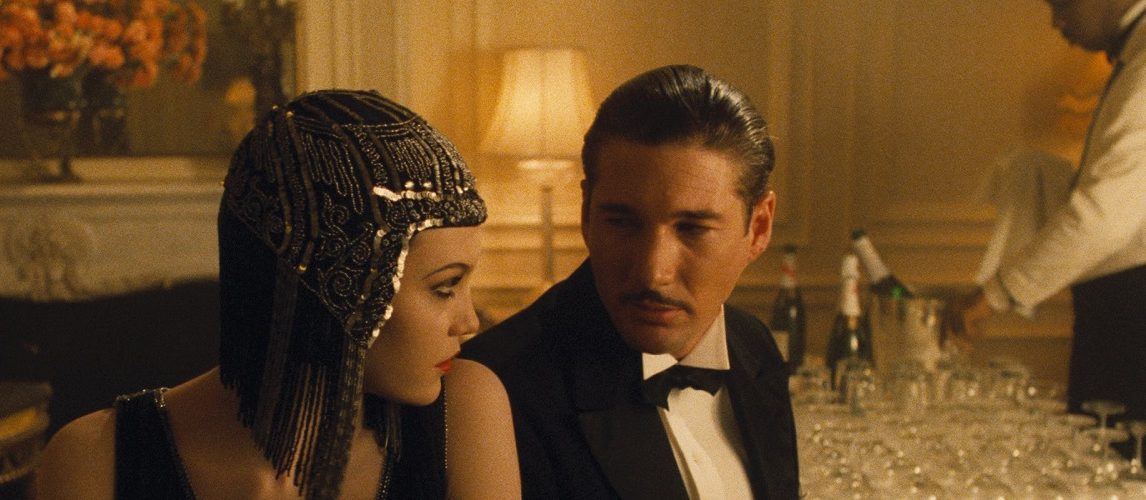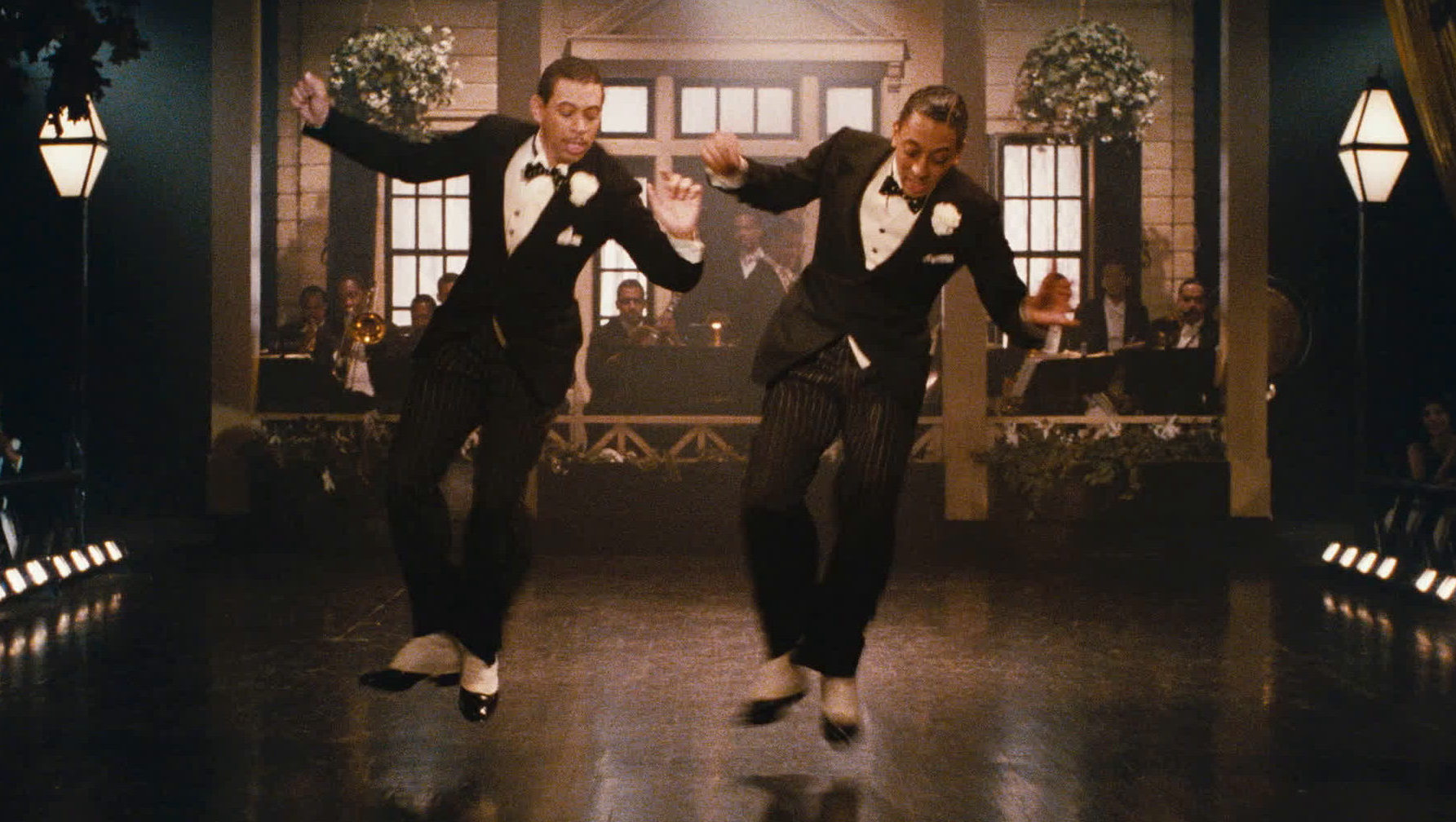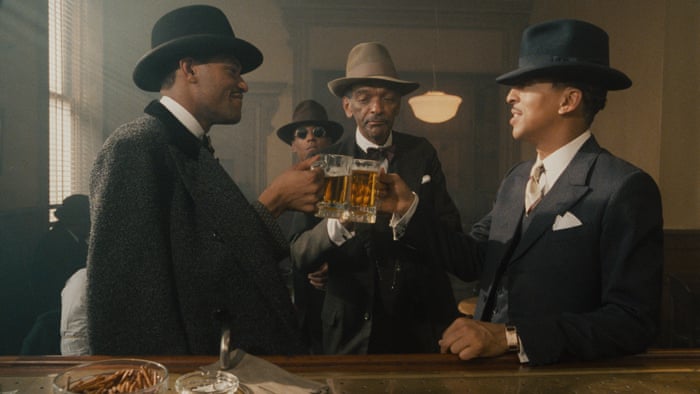

“Baby, you may be passin’ for white, but you ain’t invisible.”
I took a college course in which we spent approximately sixty hours across the semester talking about and watching the films of Francis Ford Coppola. Somehow, I have no recollection of ever discussing The Cotton Club. We covered the early years under the tutelage of Roger Corman, the triumphant run in the 1970s, the ambitious failure of One From the Heart, the S.E. Hinton adaptations. We even talked about the relationship between Coppola and Tom Waits and watched Peggy Sue Got Married in class. I always assumed that The Cotton Club was part of that lackluster string of films that Coppola pumped out year after year to pay back his debts in the ‘80s, and it seems like every retrospective look at the auteur lumps it in there as well. While its creation was indeed undertaken in mercenary fashion, and its equally true that the production was as much of a sprawling mess as some of his previous projects, those facts do not diminish the finished product, which is a heck of a good film, juggling a couple of love stories, mob bosses and gang violence, tense racial relations, and an abundance of exquisite musical numbers.
Although the story is fictional, it contains many historical characters and is centered around a real institution. The Cotton Club was a popular nightclub during the Harlem Renaissance, which coincided with the years of prohibition in the United States. Originally opened by heavyweight champion boxer Jack Johnson, it was taken over by gangster and bootlegger Owney Madden (Bob Hoskins) upon his release from Sing Sing in 1923. Madden transformed the club into an expensive, whites-only establishment at which wealthy patrons could drink their illegal alcohol while being entertained by black performers. Although they paid the entertainers well and many popular figures got their start there, its plantation-style setup, sexualized murals, and jungle decor only reinforced the stereotypes of the era. These transgressions are no secret, and Coppola does not try to sidestep them. Rather, along with writer William Kennedy,1 he uses them as a central source of conflict. But neither does he shy away from emphasizing the joyous spectacle of the cabaret or highlighting several important artists—such as Duke Ellington and Cab Calloway—who plied their trade on its stage. It’s unfortunate that social norms once dictated that black artists perform exclusively for white audiences, but there is still obvious delight when an entertainer puts on a show for a receptive crowd, no matter the colors of their skin.

Reading behind-the-scenes accounts of the production—editorial conflicts, budget issues, lawsuits, the murder of a financial backer—it is a wonder how smoothly the gigantic sets, ensemble cast, and branching narrative all come together. The first love story that we are presented with is the illicit relationship between Dixie Dwyer (Richard Gere), an ambitious young cornet player, and Vera (Diane Lane), the teenage moll of local mob boss Dutch Schultz (James Remar). After unwittingly saving the gangster’s life, Dixie finds himself on the loose cannon’s good side—and his payroll. Dixie and Vera’s flirtatious relationship begins almost immediately, but after witnessing Dutch plunge a meat-carving knife through the throat of a rival boss at an otherwise peaceful gathering, they keep their feelings secret.
The other romantic subplot belongs to Sandman Williams (Gregory Hines), a tap-dancer who just landed a gig at The Cotton Club with his brother Clay (Maurice Hines—Gregory’s real-life brother), and Lila (Lonette McKee), a mixed race singer with light skin who occasionally passes herself off as white to perform at other venues. Their initial courtship occurs within the confines of the Cotton Club, where the charismatic, multi-talented Sandman woos Lila and regularly draws the ire of the club’s management for stepping out of line. Their blossoming relationship causes Lila to morally struggle with whether to take advantage of her ability to pass as white or be proud of her lineage.

Dixie is as close to a main character as we get, and his bridge-gapping presence helps to connect the various subplots. He is pals with Sandman and other black entertainers, their mutual respect born out a shared appreciation for the transcendent beauty of music and their ability to play it.2 His charisma, handsome looks, and loyalty are seen as promising by the bosses, and he soon finds himself starring in Hollywood films, playing cornet and piano at extravagant parties and spending a lot of time looking after Vera. But The Cotton Club is a true ensemble picture, and it is the large cast of small roles brought to life by excellent actors that really fleshes out the film’s ambitious scope and gives it a pleasant sense of scale. We’ve got Bob Hoskins, James Remar, and Fred Gwynne as mob bosses, Nicolas Cage as a hot-headed rider of coat tails, Laurence Fishburne as a drug trafficker, and Tom Waits as The Cotton Club’s stage manager, along with dozens of other bit players who pop in for a scene or two.
The two love stories, as well as that of the gangsters’ numbers racket, unfold against a backdrop of exquisite musical performances at the Cotton Club, several of which are presented in their entirety. Coppola’s original cut of the film was rejected by studio heads because it featured too much music and too much of Sandman’s story, forcing the director to acquiesce out of fear of losing all control of his film. The theatrical cut was a fragmented mosaic—only snippets of the performances remained intact, the dueling stories stepped on one another rather than complementing, and the largely gangster-focused film flopped. It was mutilated, but still had astonishing moments of beauty and brutality. In 2019, Coppola used $500k of his own money to finance a restoration and re-cut of the film, dubbed The Cotton Club: Encore, that realigns it with his original vision. It’s the version I’m most familiar with and the one which I recommend watching.

The film is overflowing with good individual scenes—the challenge was always whittling all that footage down into a cohesive whole—but there are a few specific moments that stand out. One is a scene between Owney Madden and his right-hand man Frenchy (Gwynne) after Frenchy is released from an intense hostage situation. Madden drops his tough guy act and embraces the large man (Gwynne, perhaps best known for his Herman Munster role, is about a foot taller than Hoskins). Another is when the Hines brothers engage in a tap dancing showdown with some older hoofers. Later, Hines’s rapid tapping is intercut with the gunshots of a brutal gangster hit, stylistically echoing the famous baptism scene in The Godfather. And I’m always happy when Tom Waits shows up with his gravelly voice and off-kilter demeanor.
The greatest success of The Cotton Club is how thoroughly it evokes a sense of place. Coppola’s emphasis on musical performances, which often take over for minutes at a time, are uniformly excellent, staged and captured with virtuosity. Coppola was always a brave filmmaker—if not exactly experimental, he was certainly pushing boundaries. The Cotton Club fits within the broad scope of both gangster flick and musical drama, but all of that fades into the background when the focus is turned toward the joyful performances, which Coppola lovingly pushed to the forefront in his restoration of this underrated gem.
1. There were reportedly dozens of scripts written, and Mario Puzo also gets a writer’s credit, so it’s hard to say who exactly deserves the most credit for what eventually ended up in the screenplay.
2. Richard Gere actually played all his instruments in the film, and does so quite well.